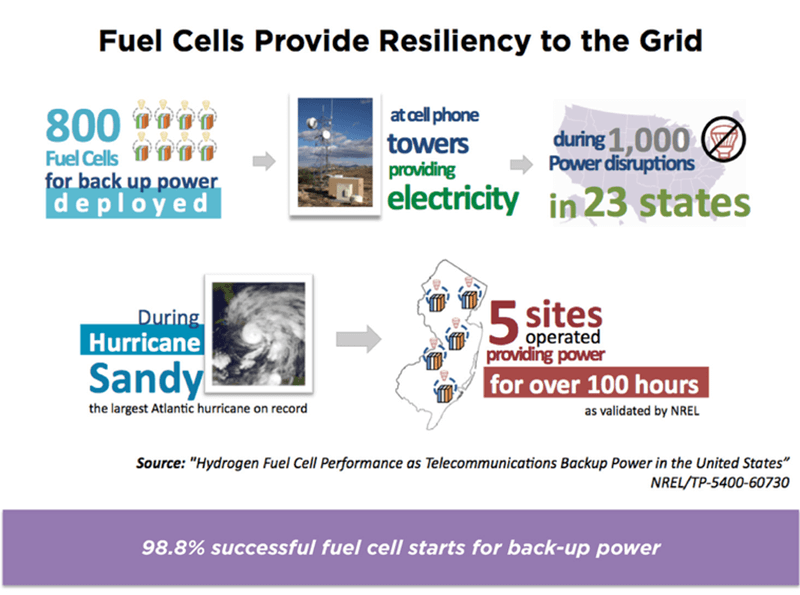Fuel Cells Powering Critical Infrastructure in Disasters
The United States’ power grid is 99.97% reliable, but when it fails, it is both disruptive and costly. Hurricanes, tornados, thunderstorms and other weather events—not to mention human error, animals, and mechanical failure—can knock out power and communications infrastructure that cost Americans at least $150 billion in economic losses each year. Recognizing the vulnerabilities of grid dependency, organizations are looking at fuel cells as an attractive option for reliable backup power. After Superstorm Sandy slammed the Caribbean and the East Coast, fuel cells provided emergency backup power to at least 100 telecommunications towers in both the Bahamas and the Northeast United States. During Hurricane Irene in 2011, ReliOn fuel cells kicked on at 56 Sprint cell towers, and Doosan fuel cells maintained power at both a storm shelter at South Windsor High School and a Whole Foods location in Connecticut.

Telecommunications
Today, more than a third of U.S. households rely solely on wireless communication devices, putting ever more pressure on mobile networks to function during emergencies. Storms can be particularly disruptive to critical communications systems used by first responders, 911 operators, emergency crews, and the general public. Superstorm Sandy knocked out 25 percent of cell sites in the 10-state area it affected, causing cell phone outages in more than 150 counties. After the summer 2012 “derecho” thunderstorm knocked out power all over the Washington, D.C. area, 2.3 million people lost access to 911 services for four days, partially due to backup diesel generator failures at Verizon facilities.1A number of large mobile service providers, including Metro PCS, AT&T, Sprint, and others have installed fuel cell systems at more than 5,500 cell towers nationwide.
Grocery and Retail Stores
Grocery stores can suffer big losses in spoiled produce and other perishables if grid power is lost for an extended time. Several supermarket chains, including Whole Foods, Safeway, Stop & Shop, Albertson’s, Star Market, and Price Chopper, have invested in fuel cell backup systems at some of their new stores, hoping to mitigate the financial impact of losing power. Perhaps the best example of the benefit of fuel cells to grocery stores came during Hurricane Irene, when a Whole Foods in Glastonbury, Connecticut, the first grocery store to install a fuel cell for stationary power, was able to keep its coolers running with its 200 kW fuel cell. Whole Foods now has four stores nationwide powered by fuel cells.